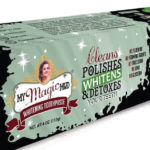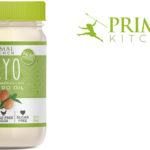Tumeric: An Ancient Medicine

(DetoxifySamurai) Turmeric is a product of Curcuma longa, a rhizomatous herbaceous perennial plant belonging to the ginger family Zingiberaceae, which is native to tropical South Asia. As many as 133 species of Curcuma have been identified worldwide. Turmeric and several other species of the curcuma genus grow wild in the forests of Southern Asia including India, Indonesia, Indochina, nearby Asian countries, and some Pacific Islands including Hawaii. India produces nearly all of the world’s turmeric crop and consumes 80% of it. With its inherent qualities and high content of the important bioactive compound curcumin, Indian turmeric is considered to be the best in the world.
The use of turmeric dates back nearly 4000 years to the Vedic culture in India, where it was used as a culinary spice and had some religious significance. It probably reached China by 700 ad, East Africa by 800 ad, West Africa by 1200 ad, and Jamaica in the eighteenth century. In 1280, Marco Polo described this spice, marveling at a vegetable that exhibited qualities so similar to that of saffron. According to Sanskrit medical treatises and Ayurvedic and Unani systems, turmeric has a long history of medicinal use in South Asia. Susruta’s Ayurvedic Compendium, dating back to 250 BC, recommends an ointment containing turmeric to relieve the effects of poisoned food.
Turmeric is eaten as a food both raw and cooked throughout Asia. While turmeric root looks much like ginger root, it is less fibrous and is more chewable, crunchy, and succulent. The fresh root (not the powder) has a somewhat sweet and nutty favor mixed with its bitter flavor. It is not difficult to chew and can consumed plain or chopped up and put in salads raw. Traditional use includes mashing/grinding it in a mortar to make a paste to mix with other spices for flavoring in curries. In modern times, the most common use is of the dried root powder as the base of most curries in India and other nearby countries.
Its uses
Turmeric is used as an herbal medicine for rheumatoid arthritis, chronic anterior uveitis, conjunctivitis, skin cancer, small pox, chicken pox, wound healing, urinary tract infections, and liver ailments (Dixit, Jain, and Joshi 1988).
It is also used for digestive disorders; to reduce flatus, jaundice, menstrual difficulties, and colic; for abdominal pain and distension (Bundy et al. 2004); and for dyspeptic conditions including loss of appetite, postprandial feelings of fullness, and liver and gallbladder complaints.
It has anti-inflammatory, choleretic, antimicrobial, and carminative actions (Mills and Bone 2000). The main clinical targets of turmeric are the digestive organs: in the intestine, for treatment of diseases such as familial adenomatous polyposis (Cruz-Correa et al. 2006); in the bowels, for treatment of inflammatory bowel disease (Hanai and Sugimoto 2009); and in the colon, for treatment of colon cancer (Naganuma et al. 2006).
For arthritis, dosages of 8–60 g of fresh turmeric root three times daily have been recommended (Fetrow and Avila 1999). For dyspepsia, 1.3–3.0 g of turmeric root is recommended. No known interaction of drugs with turmeric has been reported by the monographs of the German regulatory authority, Commission E (Blumenthal, Goldberg, and Brinckmann 2000).
Turmeric Health Benefits
Here are some of the diseases that turmeric has been found to help prevent or alleviate:
- Alzheimer’s disease: There are more than 50 studies on turmeric’s effects in addressing Alzheimer’s disease. The reports indicate that extracts of turmeric contain a number of natural agents that block the formation of beta-amyloid, the substance responsible for the plaques that slowly obstruct cerebral function in Alzheimer’s disease.
- Arthritis: Turmeric contains more than two dozen anti-inflammatory compounds, including sixdifferent COX-2-inhibitors (the COX-2 enzyme promotes pain, swelling and inflammation; inhibitors selectively block that enzyme). By itself, writes Duke, curcumin – the component in turmeric most often cited for its healthful effects – is a multifaceted anti-inflammatory agent, and studies of the efficacy of curcumin have demonstrated positive changes in arthritic symptoms.
- Cancer: There are more than 200 citations for turmeric benefits related to cancer and more than 700 for curcumin and cancer. He noted that in the handbook Phytochemicals: Mechanisms of Action, curcumin and/or turmeric were effective in animal models in prevention and/or treatment of colon cancer, mammary cancer, prostate cancer, murine hepatocarcinogenesis (liver cancer in rats), esophageal cancer, and oral cancer. Duke said that the effectiveness of the herb against these cancers compared favorably with that reported for pharmaceuticals.
- Neuronal, cardiac and kidney disorders: Tumeric administered for one month afforded significant cardioprotection and functional recovery that was attributed to reduction in cell death.
- Depression: Studies have shown that the effects of tumeric have been more potent than a certain anti-depressant and that these results demonstrate that tumeric has specifict antidepressant effects in vivo.
- Digestive Stimulant: As a dietary supplement, it favorably enhanced the activities of pancreatic lipase, chymotrypsin, and amylase. Moreover, turmeric mixed with other spices such as coriander, red chili, black pepper, and cumin brought about a pronounced stimulation of bile flow and bile acid secretion.
- Cholesterol regulator: One study found that crucumin was equal or more effective than diabetes medications at reducing oxidative stress and inflammation in the treatment of high cholesterol.
Some people have reported allergic reactions to turmeric, especially after skin exposure. Typically this is experienced as a mild, itchy rash. In addition, high doses of turmeric have been observed to cause:
- Nausea
- Diarrhea
- Increased risk of bleeding
- Increased liver function tests
- Hyperactive gallbladder contractions
- Hypotension (lowered blood pressure)
- Uterine contractions in pregnant women
- Increased menstrual flow
People taking certain medications should also be careful when using turmeric in their food or supplementing with it. Turmeric may interfere with anti-coagulants like aspirin, clopidogrel and warfarin. It also can affect medications such as non-steroidal, anti-inflammatory drugs. As with any herb or supplement, use as directed.
If you’re in the position where you must be on prescription medications, don’t discount the need to include ample amounts of fresh, organic turmeric into your diets because it will help reduce the adverse affects of the medicine.
A study that was published in the Journal of Pharmacy and Pharmacology describes how combing curcumin with prednisolone (a steroid) effectively reduces the side effects of this dangerous medication.






